May 2019 will be the first month in history when renewable energy will surpass coal as a source of electricity generation in the United States. In normal times, this shouldn’t be a surprise: While growing, the share of renewables in U.S. electricity generation is still low by international standards (about 13 percent in 2015, compared to 29 percent in Germany, 74 percent in Brazil, and 100 percent in Iceland) and could easily grow more. What is surprising is that the U.S. is adopting a cleaner energy mix under an administration that withdrew from the Paris agreement on climate change and relaxed pollution rules to help the coal industry.
The announcement that the U.S. was “leaving Paris” was seen as a major setback for the fight against global warming. What was not anticipated was how private firms and local governments are reacting. Major oil companies, including ExxonMobil, continue to invest in low-carbon technologies and some state governments have imposed stricter local environmental standards to countervail the weaker federal ones. For instance, in September 2018, then-governor of California Jerry Brown signed an executive order committing the state to be carbon-neutral by 2045. As Nathan Hultman and Paul Bodnar put it in another Brookings blog, “Trump tried to kill the Paris agreement, but the effect has been the opposite.”
These unexpected developments may be due to the public-spirited behavior of firms and state governments. However, in a recent paper, we show that firms’ investments in clean technologies and states’ adoption of stricter emission standards could be the result of firms’ profit-maximizing behavior accompanied by successful lobbying efforts in the face of weaker environmental rules. The decision to relax emission standards may increase firms’ incentives to adopt clean technologies. The reason is simple: The increased output that these technologies permit may raise profits by more than what the dirty technologies allow. But this is not necessarily good news since the overall level of emissions may also increase as cleaner technologies enable firms to produce more.
For example, consider an environmental regulation that is so tight that the city center can only be reached by public transportation, as is the case in some European cities. Assume now that the regulation allows people (like one of us) to drive to work in private cars. Since people can now drive more, they will be keener to buy fuel-efficient vehicles, but they will also end up driving and polluting more.
Another finding from our paper is that industry profitability may be reduced by the weakening of environmental standards if it is likely that tougher rules will be implemented in the future. The reason is that to undo the damages that current policies are inflicting on the environment, a future “greener” administration will be forced to impose draconian emission cuts to stick to the U.S.’s original Paris commitments. If such a shift in policies is likely, then the current regulation may negatively affect firms’ expected profitability. Firms’ profits would increase if firms were forced to pollute less today to be able to pollute a bit more tomorrow. In other words, the volatility and uncertainty surrounding the regulatory framework may have a drag on firms’ profitability. In our case, all firms would be better off if they were mandated to adopt today to the standards that they will likely face in the future.
So why don’t firms pollute less unilaterally? Because no individual firm would find it in its interest to pollute less: It will bear the whole cost of allowing all other firms to pollute more tomorrow. Going back to the traffic example, while we would all be better off if we were forced to use public transportation instead of contributing to traffic jams, it is in no individual’s interest to leave their car home just to make others’ commute easier. An efficient way to solve this tragedy of the commons, is to force all firms to abide by a stricter regulation. Of course, this is easier said than done when federal regulation is at the root of the problem. And it is unlikely that all states will agree on a common stricter regulation because, again, it will be in the interest of small states to free ride on the regulation enacted in the other states.
For larger states, the story is a different one. They may have enough critical mass for their regulation to matter at the national level and, thus, they will be willing to pay the price of stricter regulation, even if other states do not follow. This is what we call the “California effect”: A very large state may be willing to pay for the price of policies that affect the rest of the U.S. states because they are also significantly affected by them. In terms of the traffic example, the World Bank and the International Monetary Fund (and certainly the Federal government) are big enough in Washington, D.C. that they could make their employees better off by banning their use of private transportation; the remaining lawyers and lobbyists could (literally and figuratively) free ride.
To be clear: We do not think that individuals are motivated only by self-interest. And we are convinced that principled behavior is needed to keep climate change under control. However, it is also important that we correctly interpret the different signals we receive, look at different and alternative explanations, and act accordingly. For instance, the fact that firms are adopting cleaner technologies could lead to an increase or a decrease in total emissions depending on what motivates the different actors. Hence, we should not be complacent about the latest data on firms’ technological choices and read them as if cleaner technologies necessarily implied less emissions. Similarly, if the stricter environmental standards at the state level are the result of lobbying by firms whose expected profits would otherwise be lower, then we should be leery about the underlying reason for the lower expected profits–the possibility that the relaxed environmental standards may be reversed. If this possibility is reduced, then the mechanism could work in the opposite direction and states may adopt laxer environmental standards.
The Brookings Institution is committed to quality, independence, and impact.
We are supported by a diverse array of funders. In line with our values and policies, each Brookings publication represents the sole views of its author(s).

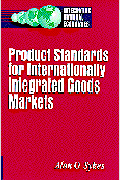
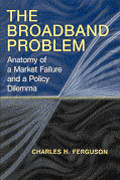
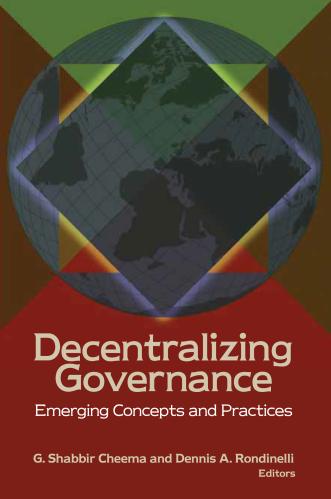
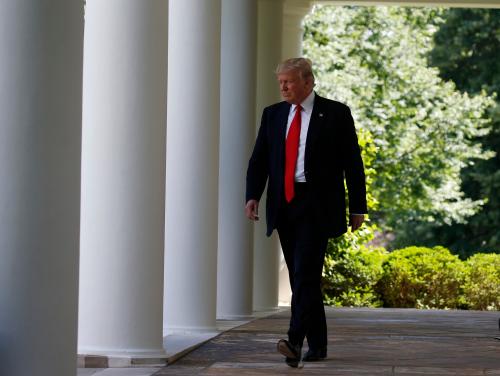



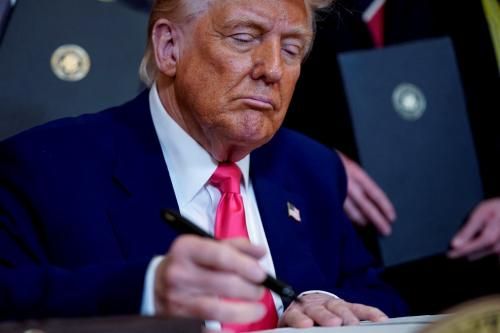

Commentary
Are laxer environmental policies being trumped?
May 8, 2019